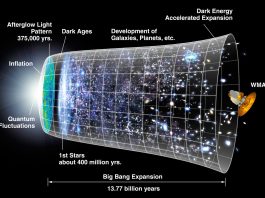Researchers at the University of Notre Dame have developed a simulation model to improve our understanding of the origins of cosmic rays.
Cosmic rays are high-energy atomic particles that incessantly bombard the Earth’s surface at almost the speed of light. Our planet’s magnetic field shields the surface from the majority of the radiation produced by these particles. However, cosmic rays are capable of causing electronic malfunctions and are the primary consideration when planning for space missions.
Scientists understand that cosmic rays derived from the array of stars in the Milky Way, including the Sun, and stars in other galaxies. The challenge is detecting the particles in particular sources, as the turbulence of interstellar gas, plasma, and dust results in them scattering and rescattering in various directions.
Researchers from the University of Notre Dame have established a simulation model to enhance our comprehension of these and other cosmic ray transport characteristics, with the aim of forming algorithms to improve existing detection methods.
The researcher’s findings have been published in AIP Advances.
Brownian motion theory is usually utilised to examine cosmic ray trajectories. Similar to the random motion of pollen particles in a pond, collisions between cosmic rays within fluctuating magnetic fields result in the particles propelling in different directions.
However, this traditional approach to diffusion fails to properly tackle the various propagation rates influenced by diverse interstellar environments and long periods of cosmic voids. Particles may become entrapped in magnetic fields for long periods of time, thereby slowing them down, while others are propelled into greater speeds via star explosions.
In order to overcome the complicated nature of cosmic ray travel, the team have been utilising a tochastic scattering model, a compilation of random variables that develop over time. The model is founded on geometric Brownian motion, a classic diffusion theory combined with a slight trajectory drift in one direction.
In their first experiment, the researchers simulated cosmic rays travelling through interstellar space and intermingling with localised magnetised clouds, represented as tubes. The rays travel uninterrupted over a long period of time. They are then disrupted by chaotic interaction with the magnetised clouds, leading to some of the rays reemitting in random directions and others staying trapped.
Founded on frequent random sampling, Monte Carlo numerical analysis showed varieties of density and reemission strengths of the interstellar magnetic clouds, resulting in skewed, or heavy-tailed, distributions of the propagating cosmic rays.
This evaluation indicates marked superdiffusive behaviour. The model’s predictions agree well with known transport properties in complex interstellar media.
Salvatore Buonocore, the lead author of the study, commented: “Our model provides valuable insights on the nature of complex environments crossed by cosmic rays and could help advance current detection techniques.”









